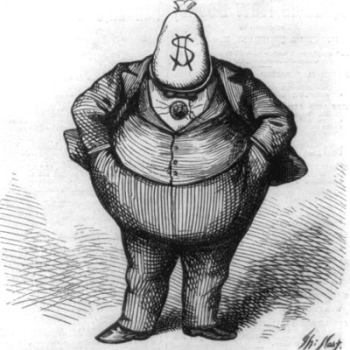Here’s an astonishing figure: $17.5 billion. That’s what banks collect from their customers every year in “overdraft protection” fees.
It sounds so benign — protection — like it’s there to look after your interest, but that’s not how it works. What it means is that your debit card will never again be declined due to insufficient funds. Instead, the bank will cover the difference, subtracting the full amount from your account and charging you $30 more for the service. Miscalculate your balance on a day when you’re running a handful of errands and these fees can snowball. And you may never know until you get your monthly statement. This happens often — $17.5 billion often, to the tune of roughly $58 for every man, woman and child in the U.S. each year.
Some comparison is needed to put that figure into perspective. Banks take $17.5 billion from American wallets each year in overdraft protection fees. That’s more than the annual GDP of Panama (about $17.1 billion). Think movie stars and professional athletes are overpaid? Banks collect more in overdraft protection fees each year than the combined payrolls of the NBA, the NFL and Major League Baseball plus Hollywood’s total U.S. box-office take.
Here’s Eileen Ambrose of The Baltimore Sun:
A few years ago lenders would return a check or deny an electronic transaction if you didn’t have enough money in your account. Now they make an overdraft loan — often without your consent — and charge a hefty fee averaging $34, according to a recent study by the Center for Responsible Lending.
Overdraft loan fees now reach $17.5 billion a year, the study found. That’s $1.7 billion more than the amount borrowed.
The American Bankers Association says overdraft loans help consumers avoid the embarrassment, inconvenience and merchant fees from a bounced check.
This “embarrassment and inconvenience” angle plays a big role in banks’ sales pitch for this $17.5-billion protection racket. Hence the whole sub-genre of TV ads in which we see embarrassed and inconvenienced customers suffering from not having overdraft protection. Those ads usually have a sexual subtext that makes them indistinguishable from Viagra commercials — “You don’t have to be embarrassed about your puny, flaccid account balance. For just $17.5 billion a year …” The idea there, I suppose, is to cultivate a kind of sexual shame that will make customers grateful to pay a $34 fee. Thank you, sir, may I have another?
The banker’s association, Ambrose writes, also notes that consumers ought to be able to avoid such fees, and offers some good advice on how to do so:
It is possible to avoid overdraft loan fees. Banks and credit unions might not always make it easy. The Center for Responsible Lending reveals banking practices that can increase overdrafts. But a diligent consumer can sidestep this quagmire.
One of the first steps is to find out if your financial institution offers an overdraft program, and opt out if it does, said Eric Halperin, director of the Center for Responsible Lending’s Washington office.
Or, see if your lender will allow you link your checking account to a savings account or credit card, said Jean Ann Fox, director of consumer protection for the Consumer Federation of America. This way if you overdraw, the money will be taken from savings or applied to your card. You’ll pay a fee. Plus, you’ll owe interest with the credit card.
“But when you cover an overdraft with your own money instead of the bank’s money, it tends to be somewhat less expensive,” Fox said. For instance, banks typically charge $10 to move money out of savings to checking. “That’s better than $34,” she said.
Here’s more information on the Center for Responsible Lending’s study, “Out of Balance: Consumers pay $17.5 billion per year.”
The center also endorses H.R. 946, Consumer Overdraft Protection Fair Practices Act, which would make it easier for consumers to opt out of overdraft protection schemes, would allow consumers to cancel over-balance transactions rather than triggering the fees, and would “prohibit financial institutions from manipulating the order of check clearing or delaying the posting of deposits to increase customers’ overdraft loan fees.”
That last bit there is somewhat astonishing. The bill would prohibit such practices because, apparently, it is not currently illegal for banks to manipulate the order of check clearing or to delay the posting of deposits to increase overdraft fees. That helps to explain how overdraft protection came to be a $17.5 billion a year racket.












